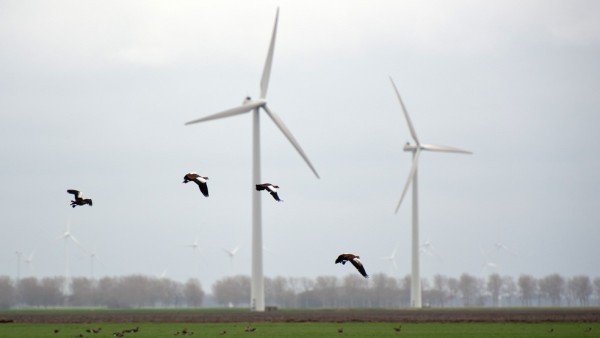The wind power industry’s heavyweights are expressing their commitment to following controversial new siting guidelines laid down by the Obama administration – and pushing, again, for passage of a key federal tax incentive.
In a letter released by the American Wind Energy Assoication (AWEA), 40 major wind players – Iberdrola Renewables, NextEra Energy, Pattern Enrgy, enXco and BP Wind Energy among them – told U.S. Department of the Interior Secretary Ken Salazar they “would support the use of the Guidelines and AWEA commits to training its members on the Guidelines and urging adherence to them.”

The warm sentiment comes as no surprise; when the administration announced the final rules on March 23 after years of drafts, discussions and consultations, AWEA CEO Denise Bode enthused that the guidelines “set the highest standard, either voluntary or mandatory, of wildlife protection for any industry.”
Reaction to the guidelines in the conservation community, however, has been mixed. Audubon came out strongly in favor; the Sierra Club was lukewarm, preferring mandatory regulations but willing to give the less stringent regimen a go; and the American Bird Conservancy was vehemently opposed, saying that the voluntary guidelines “will result in more lawsuits, more bird deaths, and more government subsidies for bad projects, instead of what America needs: true green and bird-safe wind energy.”
For the industry, the bird issue – popping up in California, Minnesota, Oregon and elsewhere – is just one of a number of thorns in its side these days. Big Wind is also running into charges that the massive turbines, which altogether now generate more than 3 percent of the nation’s electricity, are doing harm to humans. In Massachusetts, for instance, the state recently found a turbine in violation of noise standards and the turbine has been shut down pending further investigation. (It should be noted, however, that in January, a state-convened panel of independent medical and environmental health experts found little or no evidence to back up claims that low-frequency sounds from turbines harm the vestibular system, or that turbine noise brings psychological distress or mental health problems, and or that there is an association between turbine exposure and pain and stiffness, diabetes, high blood pressure, tinnitus, hearing impairment, cardiovascular disease and headache or migraine.)
But an even graver threat to the industry could be the expiration of the production tax credit. The 2.2 cents per kilowatt-hour federal incentive has been key to the industry’s boom in the past several years, but the AWEA says companies are already pulling back on projects out of fear Congressional proponents of the PTC won’t be able to rescue it before its end of the year expiration.

The AWEA was in Washington, D.C., this week to galvanize support for the PTC extension, meeting with Obama administration officials. President Obama himself was expected to speak out in favor of the PTC later today when he tours a wind blade factory in Newton, Iowa.
“With both President Obama and members of Congress covering the whole political spectrum supporting the wind tax credit to keep U.S. manufacturing jobs, it shows there’s a real chance of getting it done in time to keep this homegrown industry growing in America,” Denise Bode, CEO of the American Wind Energy Association, said in a statement after the White House meeting this week.